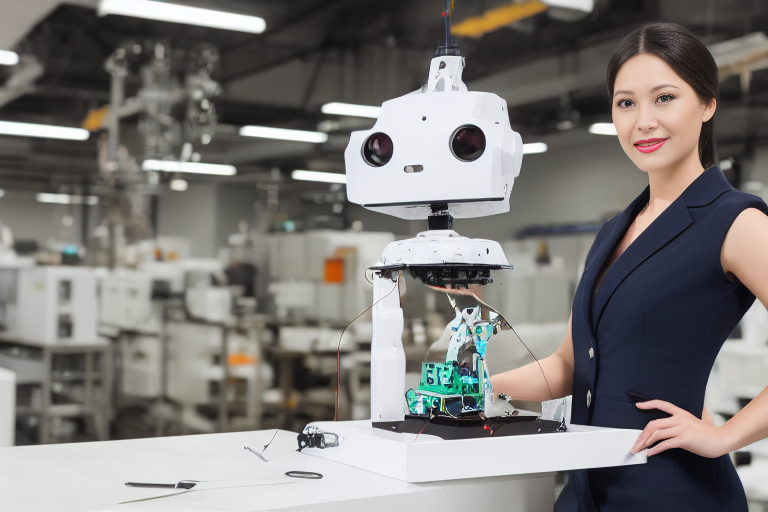In the fast-paced world of startups, developing effective and successful products is crucial to stand out in a competitive market. To achieve this, many startups are turning to methodologies such as design thinking and rapid prototyping. These methodologies focus on understanding customer needs, fostering creativity and accelerating the product development process. In this article, we will explore the application of these methodologies in the context of startups and how they can drive business success.
What is design thinking?
Design thinking is a user-centered methodology that seeks to deeply understand the needs, desires and challenges of customers. It is based on the idea that a complete understanding of the end user is essential to develop products and services that are truly valuable and satisfying. Through design thinking, startups can address complex problems in an innovative and creative way, generating solutions that adapt to market needs.
Phases of design thinking
Design thinking is typically divided into five phases:
- Empathize: In this phase, startups immerse themselves in the user’s perspective and seek to understand their needs, wants and challenges. This involves conducting interviews, direct observation and data collection to develop an in-depth view of the end user.
- Define: Once an empathetic understanding of the user has been obtained, the problem to be solved is defined. Startups identify the specific challenges users face and set clear objectives for product development.
- Ideate: In this phase, creative ideas are generated and multiple possible solutions are explored. Startups use lateral thinking and collaboration techniques to foster the generation of innovative and out-of-the-box ideas.
- Prototyping: Prototyping is a fundamental part of design thinking. Startups create rapid, tangible prototypes of their ideas, allowing them to get early feedback from users and validate concepts before investing significant resources in full product development.
- Testing: In the testing phase, prototypes are tested and user feedback is gathered. This iterative process allows startups to refine and improve their products based on real user feedback.
What is rapid prototyping?
Rapid prototyping is a methodology that focuses on the rapid creation of tangible and functional models of products or services. Unlike traditional development that involves long design and production cycles, rapid prototyping allows startups to accelerate the development process and get early and valuable feedback from users.
Benefits of rapid prototyping
Rapid prototyping offers a number of benefits for startups in product development:
- Rapid Iteration: By creating rapid prototypes, startups can make changes and improvements in an agile manner. This allows for an iterative process in which ideas are continually tested and refined until an optimal solution is reached.
- Effective communication: Tangible and functional prototypes are a powerful tool for communicating ideas and concepts to different teams and stakeholders. Prototypes allow a clearer understanding and facilitate the collaboration process.
- Early validation: By getting early feedback from users through prototypes, startups can validate concepts and make informed decisions before investing resources in full product development. This reduces risk and increases the chances of success.
Rapid prototyping tools
There are several tools and approaches for rapid prototyping, ranging from low-fidelity prototypes to interactive digital prototypes. Some of the popular tools include:
- Wireframing: Wireframing tools, such as Balsamiq or Sketch, allow the creation of low-fidelity prototypes that represent the basic structure and functionality of a product.
- High-fidelity prototyping: Tools such as Adobe XD or Figma allow the creation of interactive and visually appealing prototypes that simulate the final product experience.
- 3D printing: For physical products, 3D printing is an invaluable tool that allows the creation of physical prototypes from digital models.
Application of design thinking and rapid prototyping methodologies in startups.
The combination of design thinking and rapid prototyping has proven to be highly effective in product development for startups. These methodologies enable startups:
- Understand customer needs: Design thinking helps startups gain a deep understanding of end users and identify underlying needs and wants.
- Generate innovative ideas: The creative and collaborative approach to design thinking encourages the generation of innovative ideas and out-of-the-box solutions.
- Rapidly test and validate ideas: Rapid prototyping allows startups to create tangible models and get early feedback from users. This allows them to test and validate ideas quickly and economically.
- Iterate and continuously improve: The combination of design thinking and rapid prototyping allows startups to iterate and improve their products based on user feedback. This iterative approach ensures that the final product meets the needs and expectations of the market.
Success stories
Numerous startups have successfully used design thinking and rapid prototyping methodologies in the development of their products. Some notable examples include:
Airbnb
Airbnb is a notable example of how design thinking and rapid prototyping can drive business success. Airbnb’s founders used low-fidelity prototypes, such as photographs and PDF descriptions, to test the viability of their concept. As they received positive feedback from users, they refined their platform and turned it into one of the most successful companies in the sharing economy industry.
Dropbox
Dropbox is another example of how design thinking and rapid prototyping can lead to startup success. Dropbox founders created an animated video explaining the concept of their product before fully developing it. This visual prototype allowed them to get early feedback and validate market demand before investing significant resources in product development.
Conclusions
In summary, the application of design thinking and rapid prototyping methodologies in product development for startups offers numerous benefits. These methodologies enable startups to understand customer needs, generate innovative ideas, test and validate quickly, and iterate and continuously improve. Successful examples, such as Airbnb and Dropbox, demonstrate how these methodologies can drive business success and lead to the creation of successful products.
If you are a startup looking to develop effective products, consider implementing design thinking and rapid prototyping methodologies in your development process. These tools will help you understand your customers, generate innovative solutions and accelerate your path to business success. Don’t underestimate the power of these methodologies in the fast-paced world of startups!
Remember, design thinking and rapid prototyping are iterative processes, so don’t be afraid to experiment, get feedback and make constant improvements to your product. With a user-centric approach and an agile mindset, you’ll be on the right path to developing successful products that meet the needs of the ever-evolving marketplace. Good luck on your entrepreneurial journey!


